Diamonds are a popular topic of conversation, whether you work in an industry related to these precious stones or simply have an interest in them. However, it’s essential to clarify the aspect of diamond size to ensure precision and clarity in our discussions.
Size plays a significant role in the world of gemstones, just like with other valuable materials. Therefore, we have decided to address this matter in detail and provide you with a comprehensive understanding of what is considered a big diamond.
We understand your eagerness to discover the specific size that qualifies as “big” in the realm of diamonds. So, without further ado, let’s delve into the subject and explore what awaits you in this article.
DESIGN YOUR OWN ENGAGEMENT RING: START WITH A SETTING OR START WITH A DIAMOND. IT’S REALLY UP TO YOU!
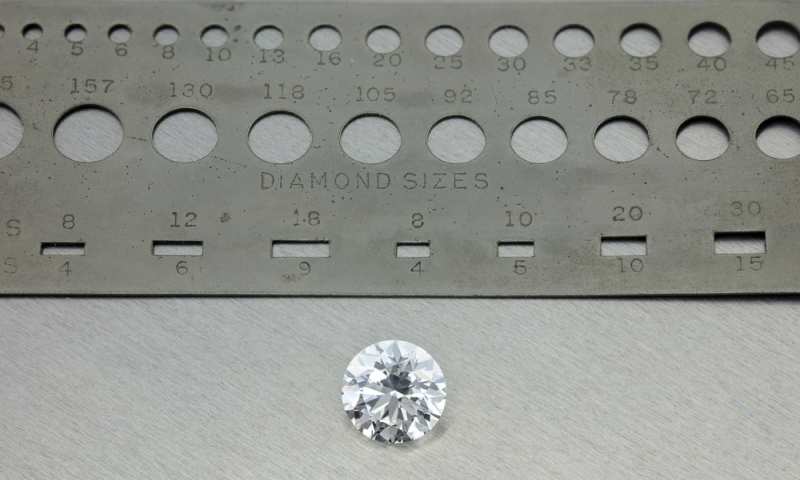
How To Measure Diamonds?
In order to determine the size or weight of diamonds accurately, it is crucial to understand the measurement methods involved. Although it may initially seem complicated, rest assured that it is not overly complex.
The most commonly used method for measuring diamonds is by weighing them and determining their carat weight. While many of you may have heard the term “carat,” it is understandable if some are unsure about its precise meaning. There’s no need to feel embarrassed about it; it’s a common occurrence.
A diamond carat is a unit of measurement that equals 0.200 grams or 0.007 avoirdupois ounce. This measurement unit is employed for diamonds and other precious materials like gold, silver, and platinum. The reason for using carats as a standard unit of measurement is that these materials are typically purchased in smaller quantities. It is unlikely that you have heard someone buying a kilogram of gold, for instance.
To weigh diamonds in carats, highly precise scales are employed to ensure accurate measurements. Using scales specifically designed for fine jewelry components, such as the 1210N scale, is crucial. These specialized scales are not meant for measuring anything heavier than a few grams and are commonly used by jewelry stores and diamond dealers.
It is important to be cautious when encountering scales that are not specifically designed for weighing fine jewelry components. Trusting such scales may lead to inaccurate readings and potential overpayment. The calibrated precision of scales designed for weighing lighter materials, including diamonds, gold, and silver, ensures maximum accuracy and should be used exclusively for such purposes.
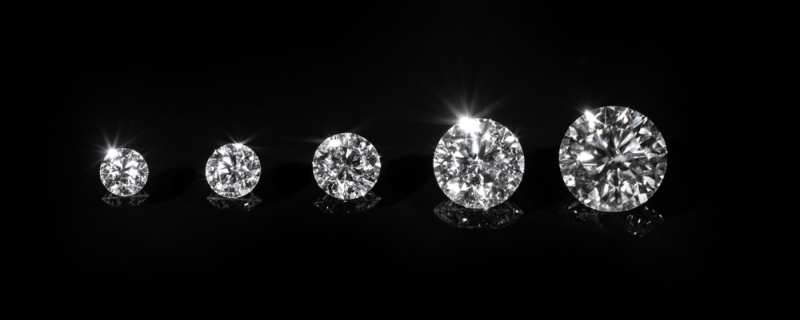
What Size Are We Looking For In Diamonds?
In general, the majority of diamonds available for sale are typically one carat in size, which is considered the standard or “diamond standard.” This size is preferred for most jewelry pieces as it strikes a balance between size and cost. Larger diamonds would significantly increase the overall expense of the jewelry.
It’s worth noting that other diamond sizes are used for industrial purposes, such as diamond saws and drills, but our focus here is on diamonds used in jewelry.
When people search for diamonds, they often seek out one-carat diamonds. However, we’re specifically discussing diamonds that are considered big in size.
From our perspective, anything over one carat can be considered big, although it’s a fairly common size. Two-carat diamonds are not as frequently encountered, but they can be readily purchased with thorough research, finding a reputable diamond dealer, and, of course, having the necessary funds.
Diamonds that approach the weight of 1 gram, which is equivalent to 5 carats, are consistently regarded as big. Despite diamonds being the hardest material in the world, their density is not particularly impressive.
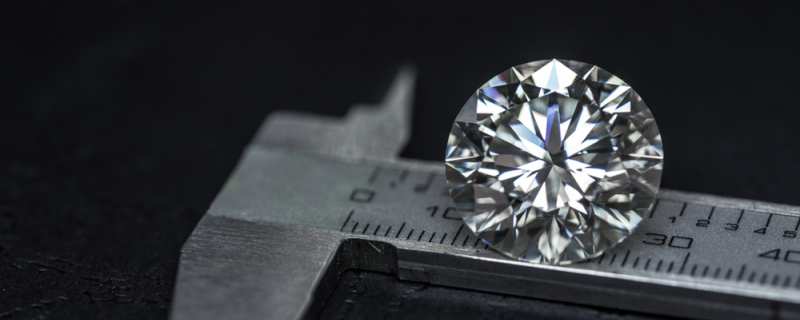
Five-carat diamonds are exceedingly rare and hold significant value in the world of diamonds. It’s highly unlikely for an average individual to come across such a large and valuable diamond, let alone have the opportunity to see or purchase one.
Finding diamonds larger than five carats in nature is like stumbling upon a fairytale. Consider a 10-carat diamond, for instance. It’s the ultimate dream for anyone involved in the diamond business. However, as a buyer, you should not expect to encounter a diamond of that magnitude.
Even if a diamond of such size is discovered and extracted, it would likely be cut into multiple smaller pieces. The cutting process results in some loss of mass, resulting in nine or ten one-carat diamonds from the initial large diamond. This practice is quite common among diamond cutters since it is easier to sell multiple one-carat diamonds than a single massive 10-carat diamond.
Considering that one-carat diamonds can be valued at over $15,000, a massive diamond of this nature would cost around $140,000 or even more. Not many people possess the financial means to purchase such a substantial and precious gemstone. Moreover, there are limited occasions or contexts where such a large diamond could be utilized. It’s too big for a necklace or a ring and cannot be worn in other ways. Carrying it around in a pouch is not feasible either.
However, some individuals might have a particular interest in collecting diamonds and could be more inclined towards acquiring such a large diamond for personal reasons. Nonetheless, diamond dealers aim to sell their diamonds promptly, making it unrealistic to wait for that one exceptional buyer.
All in all, if you’re seeking a diamond that is considered “big,” you should look for those surpassing five carats. Anything larger than that is outright extraordinary, especially for the average buyer.

Biggest Diamonds Ever Discovered
Many of you who have been reading our guide on diamond sizes might be curious about the largest diamond ever discovered. We share that curiosity too.
According to our extensive research, the largest diamond ever found is the Cullinan Diamond, weighing a staggering 3,106 carats. This remarkable gem was unearthed in South Africa in 1905. To put it into perspective, this diamond weighs over 621.2 grams, which is more than approximately 1.4 pounds. Can you imagine a diamond of that immense size?
If you were seeking something truly extraordinary and deserving of the label “big,” the Cullinan Diamond certainly meets those criteria. There are several other diamonds considered among the largest in the world, with carat weights surpassing the 1,000-carat mark.
The second-largest diamond ever found is a 1,758-carat gem discovered in the Karowe mine in 2019. While these numbers may not hold much meaning for those who haven’t witnessed these diamonds in person or through videos, try to envision the sheer enormity of these gems.
The formation and subsequent discovery of diamonds of such magnitude are nothing short of miraculous. It is incredibly rare for a diamond to grow to such extraordinary sizes, let alone be excavated and brought to light.
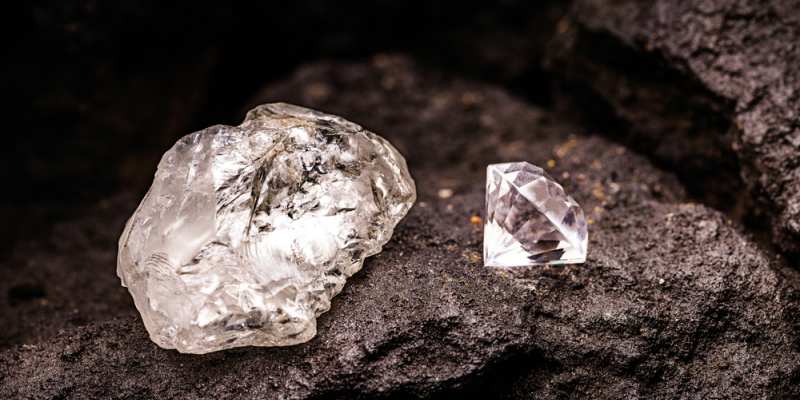
How Are Such Large Diamonds Formed?
You’ve probably wondered about the formation of such large diamonds and how they differ from regular ones. This section aims to address those questions because the concept itself is truly mind-boggling.
Let’s start by understanding how regular diamonds are formed and how that process differs for larger diamonds. Over 3 billion years ago, diamonds began to form within the Earth’s crust, subject to intense heat and pressure. These extreme conditions influenced carbon atoms to crystallize, giving rise to these precious gemstones. This remarkable transformation occurred at depths of approximately 150 to 200 kilometers beneath the Earth’s surface.
Now, when it comes to the formation of gigantic diamonds, the answer may not be as sensational as some might expect, involving volcanic eruptions, crustal disruptions, or tectonic disturbances. The primary difference between an enormous diamond and a one-carat diamond lies in the time it takes and the number of carbon atoms involved in the process.
While a small diamond takes around 3 billion years to form, larger diamonds require a staggering 5 to 7 billion years. Time is a crucial factor here. Moreover, these larger diamonds necessitate more extreme conditions underground and a greater abundance of carbon atoms for their formation and growth.
Considering the numerous factors that must align for a diamond of substantial size to develop, it becomes clear why such diamonds are incredibly rare. The bigger the diamond, the rarer its occurrence. It’s no wonder that we don’t come across significant diamonds every day, or even once every few years.
Why is that the case? Let’s recap the requirements for the formation of a large diamond:
- A higher concentration of carbon atoms
- Increased pressure
- Intensified heat
- Extended periods beneath the Earth’s crust
As you can imagine, fulfilling these criteria to produce a diamond weighing more than one or two carats is quite challenging.
What are the chances, then? To put it simply, over the past 110 years or so, only a handful of these immense diamonds have been discovered worldwide. That gives you an idea of just how rare they truly are.
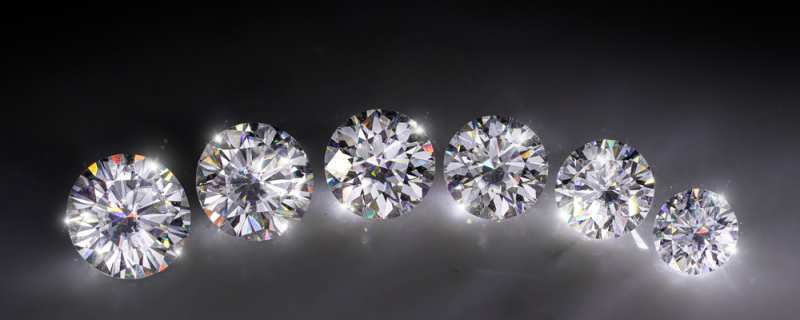
Our Final Words
Based on what we’ve discussed so far, it’s clear that big diamonds are not commonly found. You won’t come across them frequently.
But what size of diamond is considered big?
In our opinion, anything above 5 carats (or 1 gram) should be regarded as larger than usual, making it quite rare. The exceptional examples we mentioned earlier, such as the world’s largest diamonds, are significant solely because they hold the title of being the largest. However, these cases can be seen as anomalies in nature, so they should be viewed as rare occurrences rather than the norm or a reference point.
If we exclude those extraordinary diamonds, what remains are gems that are heavier or larger than 5 carats. The larger the gem, the rarer it becomes. So, if you ever have the opportunity to encounter one of these diamonds, take your time to appreciate it. It’s truly a breathtaking experience to witness a diamond that surpasses 5 carats. However, don’t expect to find them in every jewelry store you visit!


